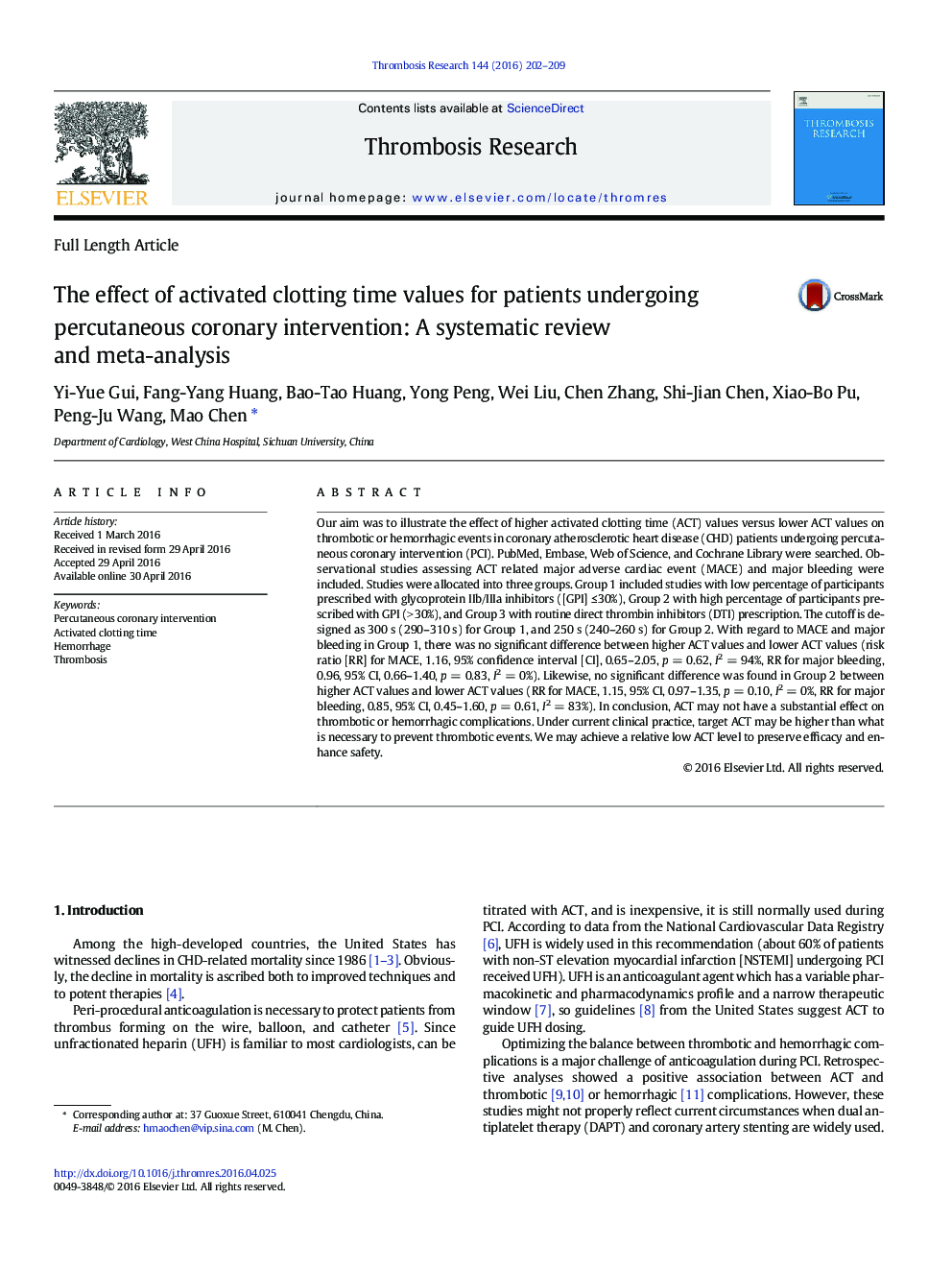| کد مقاله | کد نشریه | سال انتشار | مقاله انگلیسی | نسخه تمام متن |
|---|---|---|---|---|
| 3026841 | 1579199 | 2016 | 8 صفحه PDF | دانلود رایگان |
• ACT may not have a substantial effect on thrombotic or hemorrhagic complications.
• Under current clinical practice, target ACT may be higher than what is necessary to prevent thrombotic events.
• Systematic ACT monitoring should be advocated to reduce the bias.
Our aim was to illustrate the effect of higher activated clotting time (ACT) values versus lower ACT values on thrombotic or hemorrhagic events in coronary atherosclerotic heart disease (CHD) patients undergoing percutaneous coronary intervention (PCI). PubMed, Embase, Web of Science, and Cochrane Library were searched. Observational studies assessing ACT related major adverse cardiac event (MACE) and major bleeding were included. Studies were allocated into three groups. Group 1 included studies with low percentage of participants prescribed with glycoprotein IIb/IIIa inhibitors ([GPI] ≤ 30%), Group 2 with high percentage of participants prescribed with GPI (> 30%), and Group 3 with routine direct thrombin inhibitors (DTI) prescription. The cutoff is designed as 300 s (290–310 s) for Group 1, and 250 s (240–260 s) for Group 2. With regard to MACE and major bleeding in Group 1, there was no significant difference between higher ACT values and lower ACT values (risk ratio [RR] for MACE, 1.16, 95% confidence interval [CI], 0.65–2.05, p = 0.62, I2 = 94%, RR for major bleeding, 0.96, 95% CI, 0.66–1.40, p = 0.83, I2 = 0%). Likewise, no significant difference was found in Group 2 between higher ACT values and lower ACT values (RR for MACE, 1.15, 95% CI, 0.97–1.35, p = 0.10, I2 = 0%, RR for major bleeding, 0.85, 95% CI, 0.45–1.60, p = 0.61, I2 = 83%). In conclusion, ACT may not have a substantial effect on thrombotic or hemorrhagic complications. Under current clinical practice, target ACT may be higher than what is necessary to prevent thrombotic events. We may achieve a relative low ACT level to preserve efficacy and enhance safety.
Journal: Thrombosis Research - Volume 144, August 2016, Pages 202–209
